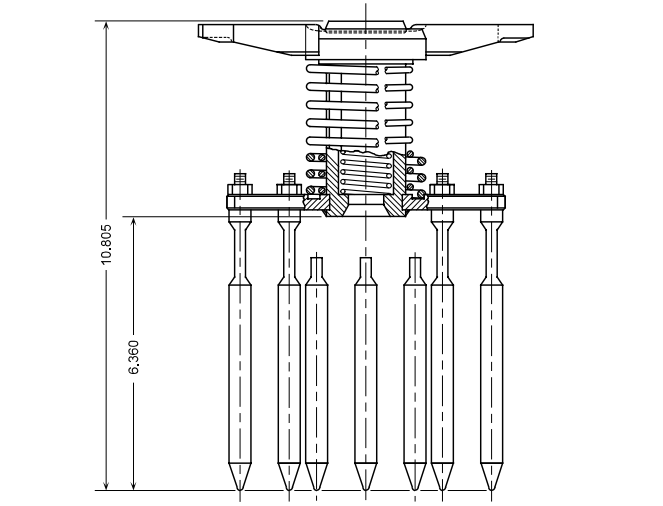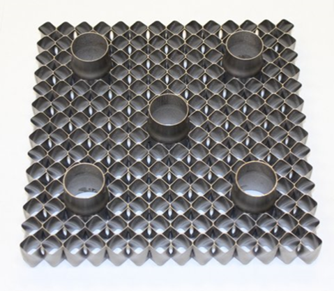US Nuclear Energy company Westinghouse has announced that it will be installing an additively manufactured fuel component by 2018. In doing so, it hopes to be the first company to do so for a commercial reactor.
The part in question will be a thimble plugging device, and its manufacturing and eventual installation will follow muliple simultaneous research and development into reducing costs for 3D printing obsolete components, fuel structural devices and prototypes.
The R&D projects include both internal research into 3D printed parts and two projects funded by the US Department of Energy.
A commercial reactor first
The nuclear reactor’s thimble plugging device is a device that is used to hold nuclear fuel as it is lowered into the reactor core, and stop nuclear debris escaping. Westinghouse’s thimble plug will be made of AM 316L stainless steel and non-AM 304.
Westinghouse materials scientist Clint Armstrong stated that other 2018 priorities include the “material development, testing and support” in developing additive manufacturing codes and standards.

Cost efficiency R&D backed by DOE
In June 2016, Westinghouse was awarded $8 million by the US Department of Energy (DOE) to fund research into 3D printing nuclear components without tooling. The funding was directed towards research into powder bed fusion additive manufacturing processes for nuclear components.
Research included replacing traditional tooling with additive manufacturing technologies. The plant used a specific AM alloy which improved wear resistance of the part and also increased tooling lifespans.
In January 2017, Armstrong revealed in an interview that tests had shown 3D printing to cut costs by up to 50% and lead times between 75 and 90% for part cast molds for all reactor types, with testing on powder bed fusion underway.
As a result, Westinghouse is now researching the comparative efficiency laser powder bed fusion for core structural components, direct energy deposition for additional components, and binder jetting technologies for smaller components at a lower cost than traditional components.
Safety research R&D backed by DOE
The DOE allocated Westinghouse a further $830,000 in federal funding to “study the neutron radiation effects on zirconium alloys produced via the additive manufacturing process for light water reactors (LWRs).”
In getting a component qualified for use, the DOE funded project is being conducted together with the Electric Power Research Institute (EPRI), Oak Ridge National Laboratory’s Manufacturing Demonstration Facility, the University of Tennessee and Rolls-Royce. According to Armstrong, this will help develop an “in-process monitoring and integrated computational materials engineering process.”

A chain reaction in the nuclear industry
In 2016 Westinghouse’s UK and Middle East division carried out a study together with the UK Nuclear Advanced Manufacturing Research Centre (AMRC) to explore potential design efficiencies and reduce build times for Nuclear reactor components.
Westinghouse VP Mick Gornall revealed that the technologies studied included “additive manufacturing or 3-D printing, advanced modelling technologies, machine and factory automation and Hot Isostatic Pressing.”
Earlier this year German electronics company Siemens 3D printed a 108mm metallic impeller for a fire protection pump in Slovenia’s Krško nuclear power plant, while in the US, Idaho National laboratory has developed an additive manufacturing process for preparing Uranium nuclear reactor feedstock.
GE Hitachi was also awarded a $2 million research grant by the US Department of Energy to research the effect of radiation on 3D printed sample replacement parts for nuclear reactors.
For more updates on 3D printing in energy subscribe to our free 3D Printing Industry newsletter, follow us on Twitter, and like us on Facebook.


